Grass Houses: Built to Last
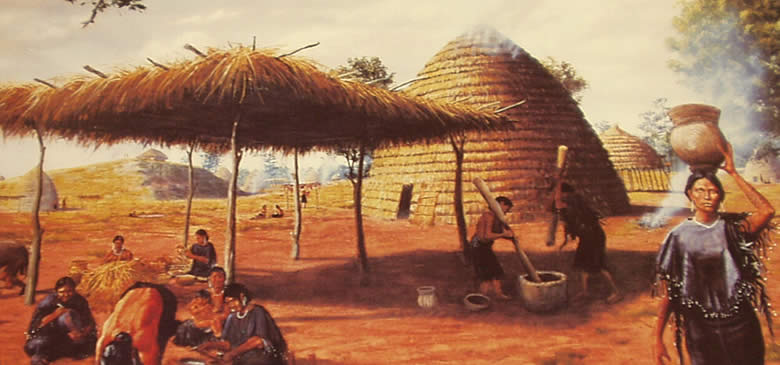
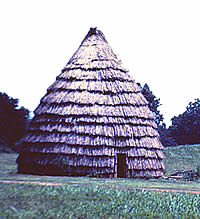
Houses made of grass? That's right—but there was nothing flimsy about these structures. Underneath the grass or thatch covering there was a sturdy framework of long wooden poles (small trees) linked by smaller branches that ran across the poles. The large beehive-shaped grass houses of the Caddo and Wichita peoples were permanent dwellings found mainly in East Texas and adjoining areas of neighboring states. Grass houses were much larger than tipis, sometimes reaching 50 feet tall and housing two or more families!
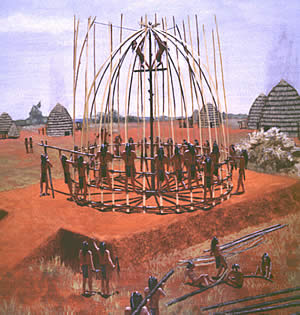
Building a house was a special event in the Caddo village. Both men and women, directed by several overseers, worked together in the construction. First, they drove long solid wooden poles into the ground in a circle from 30 to 50 feet across. Then they laid a lattice grid of smaller branches across the poles. Finally, reed or grass bundles were woven together across this framework in a method called thatching. The thick bundles were so tightly woven that the house was both waterproof and windproof. The thatch served as insulation as well, keeping the interior warm in freezing weather and cool on a hot summer day.
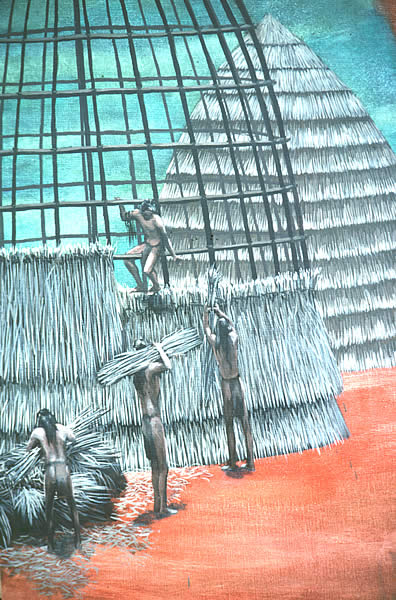
Inside each house, many beds were arranged around the circular walls of the house. The bedframes were made of light wood and were raised a few feet off the ground. Each bed was covered with buffalo hides, and the occupant was given a bit of privacy by hide curtains draw around each bed. The rest of the house was lined with shelves to store baskets full of nuts, corn, beans, jars made of clay, and food processing equipment such as mortars and pestles.
Caddo peoples and their ancestors lived in the piney woods of East Texas from about A.D. 800 to 1700 (about 300 to 1200 years ago). They hunted deer and small animals, gathered wild foods, and grew corn, beans, and squash on their farms. Caddo potters made beautiful decorated vessels out of the East Texas red clay.
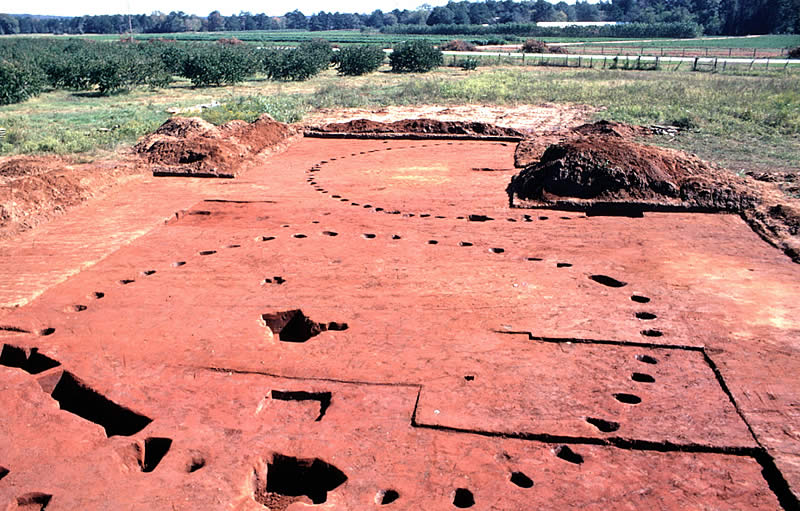
Around 1300, the Caddo began building wooden temples atop towering mounds of earth. Some mounds contained tombs where great leaders were buried. Sadly, during recent times many mounds have been dug up by treasure hunters or flattened by farmers. Today, the remaining mounds provide silent clues of the Caddo era of greatness (ca. A.D. 1200-1700). During historic times, the Caddo withstood disease, colonization, and forced relocation. Some groups had to join with others. They were forced to leave Texas and today have their tribal headquarters near Binger, Oklahoma.
